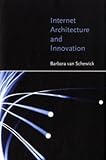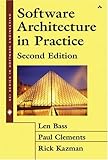|
|
Help |
| Home - Basic C - Computer Architecture (Books) | |
e99 Online Shopping Mall
|
|
Help |
| Home - Basic C - Computer Architecture (Books) | |
| Back | 81-100 of 100 |
click price to see details click image to enlarge click link to go to the store
| 81. Principles of Computer Systems/Book and Disk by Gerald M. Karam, John C. Bryant | |
 | Hardcover: 432
Pages
(1992-01)
list price: US$69.00 -- used & new: US$144.68 (price subject to change: see help) Asin: 0131594680 Canada | United Kingdom | Germany | France | Japan |
|
Editorial Review Product Description | |
| 82. Implementing SOA : Total Architecture in Practice by Paul C. Brown | |
 | Paperback: 736
Pages
(2008-04-04)
list price: US$64.99 -- used & new: US$46.68 (price subject to change: see help) Asin: 0321504720 Average Customer Review: Canada | United Kingdom | Germany | France | Japan |
|
Editorial Review Product Description Customer Reviews (1)
| |
| 83. Internet Architecture and Innovation by Barbara van Schewick | |
 | Hardcover: 560
Pages
(2010-07-30)
list price: US$45.00 -- used & new: US$37.07 (price subject to change: see help) Asin: 0262013975 Average Customer Review: Canada | United Kingdom | Germany | France | Japan |
|
Editorial Review Product Description Customer Reviews (3)
| |
| 84. Chipmakers (Understanding Computers) by Time-Life Books | |
 | Hardcover: 128
Pages
(1990-02)
list price: US$17.95 -- used & new: US$46.91 (price subject to change: see help) Asin: 0809476185 Canada | United Kingdom | Germany | France | Japan |
|
Editorial Review Product Description | |
| 85. Computer Architecture and Parallel Processing: Instructor's Manual by Kai Hwang, Faye A. Briggs | |
| Paperback: 846
Pages
(1984-11-01)
list price: US$24.50 -- used & new: US$59.97 (price subject to change: see help) Asin: 0070315574 Average Customer Review: Canada | United Kingdom | Germany | France | Japan | |
Customer Reviews (2)
| |
| 86. Space Time Play: Computer Games, Architecture and Urbanism: The Next Level | |
 | Paperback: 495
Pages
(2007-10-23)
list price: US$39.95 -- used & new: US$25.99 (price subject to change: see help) Asin: 376438414X Average Customer Review: Canada | United Kingdom | Germany | France | Japan |
|
Editorial Review Product Description Computer and video games are leaving the PC and conquering the arena of everyday life in the form of mobile applications (such as GPS cell phones, etc.) the result is new types of cities and architecture. How do these games alter our perception of real and virtual space? What can the designers of physical and digital worlds learn from one another? Space Time Play presents the following themes: the superimposition of computer games on real spaces and convergences of real and imaginary playspaces; computer and video games as practical planning instruments. With articles by Espen Aarseth, Ernest Adams, Richard A. Bartle, Ian Bogost, Gerhard M. Buurman, Edward Castranova, Kees Christiaanse, Drew Davidson, James Der Derian, Noah Falstein, Stephen Graham, Ludger Hovestadt, Henry Jenkins, Heather Kelley, James Korris, Julian Kücklich, Frank Lantz, Lev Manovich, Jane McGonigal, William J. Mitchell, Kas Oosterhuis, Katie Salen, Mark Wigley, and others. Customer Reviews (1)
| |
| 87. Computer Engineering: Hardware Design by M. Morris Mano | |
 | Hardcover: 464
Pages
(1988-02-04)
list price: US$116.00 -- used & new: US$60.00 (price subject to change: see help) Asin: 0131629263 Average Customer Review: Canada | United Kingdom | Germany | France | Japan |
|
Editorial Review Product Description Customer Reviews (2)
| |
| 88. Software Systems Architecture: Working With Stakeholders Using Viewpoints and Perspectives by Nick Rozanski, Eóin Woods | |
 | Hardcover: 576
Pages
(2005-04-30)
list price: US$64.99 -- used & new: US$42.79 (price subject to change: see help) Asin: 0321112296 Average Customer Review: Canada | United Kingdom | Germany | France | Japan |
|
Editorial Review Product Description Software Systems Architecture is a practitioner-oriented guide to designing and implementing effective architectures for information systems. It is both a readily accessible introduction to software architecture and an invaluable handbook of well-established best practices. It shows why the role of the architect is central to any successful information-systems development project, and, by presenting a set of architectural viewpoints and perspectives, provides specific direction for improving your own and your organization's approach to software systems architecture. With this book you will learn how to The architectural viewpoints and perspectives presented in the book also provide a valuable long-term reference source for new and experienced architects alike. Whether you are an aspiring or practicing software architect, you will find yourself referring repeatedly to the practical advice in this book throughout the lifecycle of your projects. A supporting Web site containing further information can be found at www.viewpoints-and-perspectives.info Customer Reviews (22)
| |
| 89. Applied SOA: Service-Oriented Architecture and Design Strategies by Michael Rosen, Boris Lublinsky, Kevin T. Smith, Marc J. Balcer | |
 | Paperback: 696
Pages
(2008-06-16)
list price: US$44.99 -- used & new: US$19.77 (price subject to change: see help) Asin: 0470223650 Average Customer Review: Canada | United Kingdom | Germany | France | Japan |
|
Editorial Review Product Description Customer Reviews (9)
| |
| 90. Information Security Architecture: An Integrated Approach to Security in the Organization, Second Edition by Jan Killmeyer | |
 | Hardcover: 424
Pages
(2006-01-13)
list price: US$87.95 -- used & new: US$75.90 (price subject to change: see help) Asin: 0849315492 Average Customer Review: Canada | United Kingdom | Germany | France | Japan |
|
Editorial Review Product Description Customer Reviews (8)
I question the author's own ability to secure an environment, and she should probably not be teaching others.
| |
| 91. Linux Networking Architecture by Klaus Wehrle, Frank Pahlke, Hartmut Ritter, Daniel Muller, Marc Bechler | |
 | Paperback: 648
Pages
(2004-05-09)
list price: US$80.00 -- used & new: US$7.65 (price subject to change: see help) Asin: 0131777203 Average Customer Review: Canada | United Kingdom | Germany | France | Japan |
|
Editorial Review Product Description Customer Reviews (6)
| |
| 92. Computer Architecture: A Structured Approach (A.P.I.C. studies in data processing ; no. 15) by R. W. Doran | |
| Hardcover: 233
Pages
(1980-06)
list price: US$64.00 Isbn: 0122208501 Canada | United Kingdom | Germany | France | Japan | |
| 93. IT Architecture Toolkit by Jane Carbone | |
 | Hardcover: 256
Pages
(2004-05-20)
list price: US$64.99 -- used & new: US$34.19 (price subject to change: see help) Asin: 0131473794 Average Customer Review: Canada | United Kingdom | Germany | France | Japan |
|
Editorial Review Product Description Customer Reviews (16)
| |
| 94. GMPLS: Architecture and Applications (The Morgan Kaufmann Series in Networking) by Adrian Farrel, Igor Bryskin | |
 | Paperback: 400
Pages
(2006-01-03)
list price: US$64.95 -- used & new: US$52.80 (price subject to change: see help) Asin: 0120884224 Average Customer Review: Canada | United Kingdom | Germany | France | Japan |
|
Editorial Review Product Description Customer Reviews (5)
| |
| 95. Eisa System Architecture (PC System Architecture, Vol 2) by Tom Shanley, Don Anderson | |
| Paperback: 207
Pages
(1995-04)
list price: US$24.95 -- used & new: US$23.77 (price subject to change: see help) Asin: 020140995X Average Customer Review: Canada | United Kingdom | Germany | France | Japan | |
|
Editorial Review Product Description Customer Reviews (1)
| |
| 96. Lean Architecture: for Agile Software Development by James O. Coplien, Gertrud Bjørnvig | |
 | Paperback: 376
Pages
(2010-08-17)
list price: US$50.00 -- used & new: US$35.40 (price subject to change: see help) Asin: 0470684208 Average Customer Review: Canada | United Kingdom | Germany | France | Japan |
|
Editorial Review Product Description Customer Reviews (2)
| |
| 97. Architecting Dependable Systems III (Lecture Notes in Computer Science / Programming and Software Engineering) (v. 3) | |
 | Paperback: 343
Pages
(2005-10-26)
list price: US$64.95 -- used & new: US$58.40 (price subject to change: see help) Asin: 3540289682 Canada | United Kingdom | Germany | France | Japan |
|
Editorial Review Product Description As software systems become ubiquitous, the issues of dependability become more and more crucial. Given that solutions to these issues must be considered from the very beginning of the design process, it is reasonable that dependability is addressed at the architectural level. This book comes as a result of an effort to bring together the research communities of software architectures and dependability. This state-of-the-art survey contains 16 carefully selected papers originating from the Twin Workshops on Architecting Dependable Systems (WADS 2004) accomplished as part of the International Conference on Software Engineering (ICSE 2004) in Edinburgh, UK and of the International Conference on Dependable Systems and Networks (DSN 2004) in Florence, Italy. The papers are organised in topical sections on architectures for dependable services, monitoring and reconfiguration in software architectures, dependability support for software architectures, architectural evaluation, and architectural abstractions for dependability. | |
| 98. Computer Repair with Diagnostic Flowcharts: Troubleshooting PC Hardware Problems from Boot Failure to Poor Performance, Revised Edition by Morris Rosenthal | |
 | Paperback: 120
Pages
(2008-08-01)
list price: US$14.95 -- used & new: US$13.45 (price subject to change: see help) Asin: 0972380175 Average Customer Review: Canada | United Kingdom | Germany | France | Japan |
|
Editorial Review Product Description Customer Reviews (24)
| |
| 99. Software Architecture in Practice (2nd Edition) by Len Bass, Paul Clements, Rick Kazman | |
 | Hardcover: 560
Pages
(2003-04-19)
list price: US$74.99 -- used & new: US$48.75 (price subject to change: see help) Asin: 0321154959 Average Customer Review: Canada | United Kingdom | Germany | France | Japan |
|
Editorial Review Product Description This award-winning book, substantially updated to reflect the latest developments in the field, introduces the concepts and best practices of software architecture--how a software system is structured and how that system's elements are meant to interact. Distinct from the details of implementation, algorithm, and data representation, an architecture holds the key to achieving system quality, is a reusable asset that can be applied to subsequent systems, and is crucial to a software organization's business strategy. Drawing on their own extensive experience, the authors cover the essential technical topics for designing, specifying, and validating a system. They also emphasize the importance of the business context in which large systems are designed. Their aim is to present software architecture in a real-world setting, reflecting both the opportunities and constraints that companies encounter. To that end, case studies that describe successful architectures illustrate key points of both technical and organizational discussions. Topics new to this edition include: If you design, develop, or manage the building of large software systems (or plan to do so), or if you are interested in acquiring such systems for your corporation or government agency, use Software Architecture in Practice, Second Edition, to get up to speed on the current state of software architecture. Customer Reviews (25)
| |
| 100. Microsoft Application Architecture Guide (Patterns & Practices) by Microsoft Patterns & Practices Team | |
 | Paperback: 560
Pages
(2009-11-04)
list price: US$44.99 -- used & new: US$26.50 (price subject to change: see help) Asin: 073562710X Average Customer Review: Canada | United Kingdom | Germany | France | Japan |
|
Editorial Review Product Description Get the definitive guide on designing applications on the Microsoft application platformstraight from the Microsoft patterns & practices team. Learn how to choose the most appropriate architecture and the best implementation technologies that the Microsoft application platform offers applications developers. Get critical design recommendations and guidelines organized by application typefrom Web, mobile, and rich Internet applications to Office Business Applications. You’ll also get links to additional technical resources that can help with your application development. Customer Reviews (5)
| |
| Back | 81-100 of 100 |